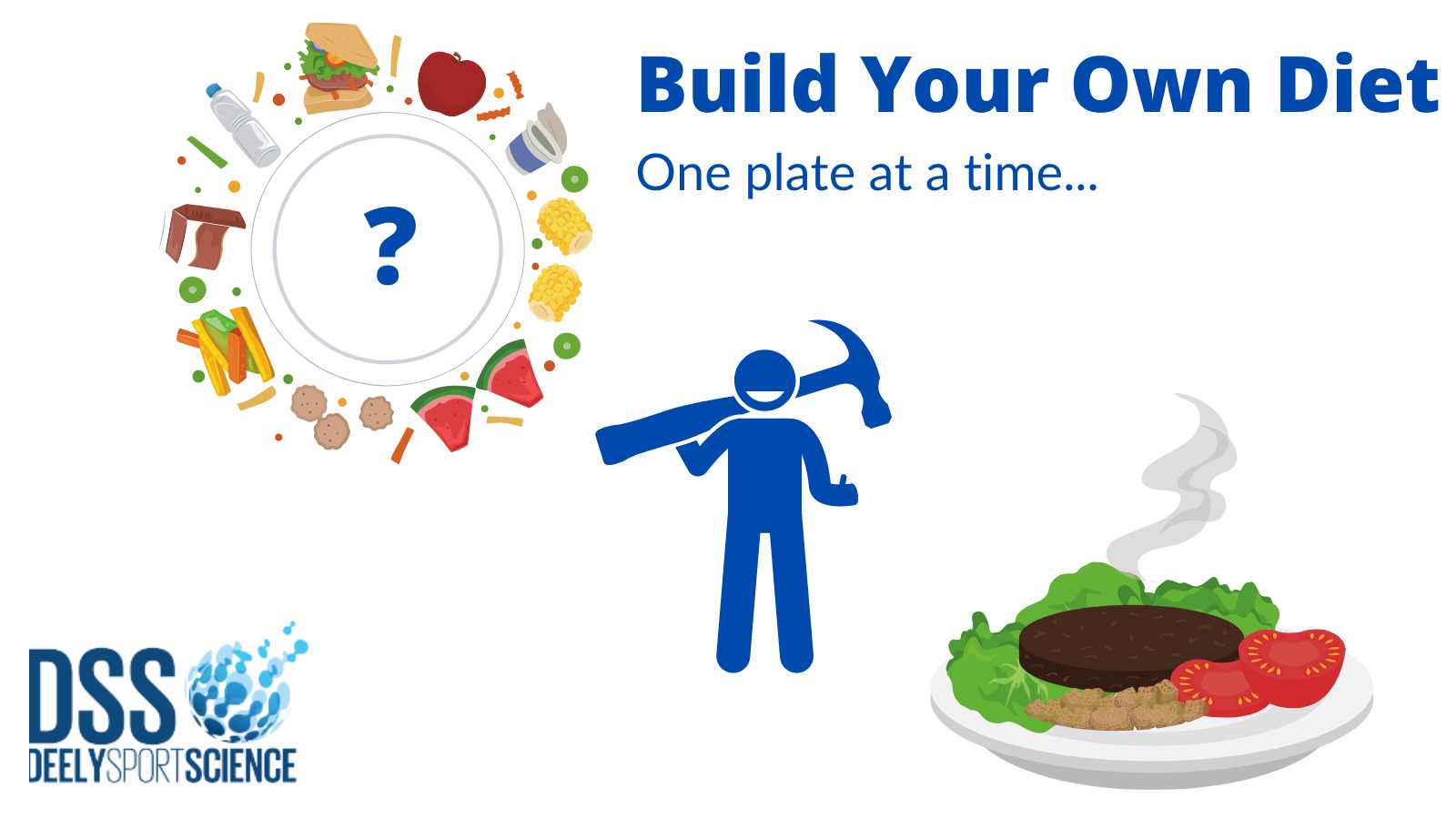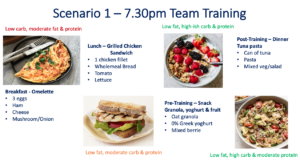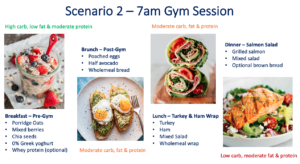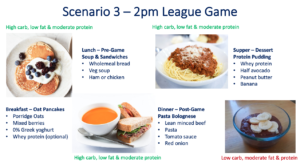
13 Oct Building your own Diet – By John Murphy MSc PhD Researcher

Building your own diet – A full day of eating
By John Murphy MSc PhD Researcher
We’ve spent the past few weeks looking at how calorie balance is the key contributor to ensuring you’re fuelled adequately and is the principle weight gain/loss. We also looked at where those calories come from, ie, macronutrients, and the various roles they play in the body.
In the calorie balance article, we looked at a couple of methods we can use to calculate ‘maintenance’ calories (how many you need to stay at the same weight based on the amount of activity you’re currently doing on an typical day). As we also know how important it is to try and consume the right blend of macronutrients (protein, carbohydrate and fat) it’s time we sued all of that insight to build our own diet (or at least a couple of days of eating).
We’ll take a hypothetical person as an example and call them Ciaran (shout out to the boss) and after using either the calorie calculator or tracking calories and weight for a week or so, we’ve arrived at maintenance calories of 2,500. We could use any number of macronutrient combinations to reach the 2,500 mark but I generally recommend beginning with protein, then adding fat and filling the remainder with carbohydrate.
Ciaran doesn’t want to change his weight (why would anyone mess with that physique?) so we’ll aim for 1.8 grams per kg of bodyweight at 77kg. 77 x 1.8 gives us 139 grams of protein each day. We’ll look at how to break this up throughout the day in a moment but just remember this is 139 x 4 giving us 556 calories.
Next we’ll aim for 20% of Ciaran’s calories to come from dietary fat so 2,500 x 0.2 gives us 500 calories. As there are 9 calories in a gram of fat that gives us a target of 500 / 9 which is 56 grams of dietary fat per day.
If we add these together 556 + 500 we have planned 1,056 calories a day. If we take this from our daily target of 2,500 (2500 – 1056) we’re left with 1,444. We just need to consume 1,444 calories through carbohydrate to make up the remainder. To break this down into grams of carbohydrate we divide 1,444 by 4 (as there are 4 calories in a gram of carbohydrate) to leave us with 361 grams of carbohydrate per day as target.
Table 1 – Macronutrient breakdown

Building the meals:
To keep it as simple as possible we could just decide we’ll eat four meals each day and divide the three macronutrient targets by 4 and ensure each meal reaches those targets. This would have Ciaran aiming for 35 grams of protein, 14 grams of fat and 90 grams of carbohydrate at each meal for 625 calories. An example breakfast that meets these targets can be seen in table 2 (or very close to those targets).
Table 2:

An example dinner or lunch can be seen in table 3.
Table 3:

Both of the above meals are perfectly acceptable and healthy. A nice mixture of the three macronutrients, plenty of colour (a decent proxy for micronutrients), and some fibre throughout. It’s very likely we’d have all of those foods in our weekly shop or else we can easily add them without having to shop in a new place that’s 40 miles away. You can also adjust based on personal preference by swapping out rice for pasta/spuds, swapping out peppers for carrots and peas, and swapping out chicken for tuna/beef/turkey. Obviously there will be slight variations in the macronutrient make-up as you exchange foods but the basis will still be quite similar.
Adapting for sports performance:
If your diet is in need of some stability and a straight forward process to follow then there is no need to read further. Simply follow the steps outlined above and you’ll notice significant differences over the course of a few weeks. If you already have a solid basis to your nutritional practices and would like to optimise for sports performance then we will start to manipulate how much of each macronutrient we have at each meal. Protein won’t really change as we still want 25-40g at each meal with each portion spread evenly throughout the day. Adjusting fat and carbohydrate can give us a little boost in terms of fuel for performance and for recovery. We should place fat away from training or matches (2-4 hours previously and 1-2 hours afterwards) and similar for carbohydrates that are higher in fibre. We can also eat carbohydrates higher in sugar (or higher GI) closer to exercise to provide faster-acting fuel.
Here are a couple of examples based on likely scenarios.

The above is an example of how to spread out macronutrients for a day where you are training at 7.30pm in the evening. Protein portions are fairly even at each meal but carbohydrate increases as you move closer to training while fat decreases.

For an am session it is recommended to be up at least an hour beforehand and to consume carbohydrate. Overnight oats are a handy meal to have prepared the night before that can also be eaten quite quickly. Protein is again spaced evenly throughout the day with carbohydrate mainly nearer to the training session and fats kept further away (such a sin the evening meal). There is some fat from eggs and avocado in the post-training meal. The avocado can be left out and added to lunch later on if you’d prefer.

The next article will look at specific carbohydrate fuelling requirements for big games but for now we’re showing an example of how to structure meals around a game in the middle of the day. Consuming carbohydrate in the two meals pre-, and 1 meal post-game should be enough to recover from league or challenge games although more specific strategies are generally required for championship games which place greater demand son the body.
The above examples are simply suggestions on how to structure your day based on the most common times training/matches are likely to occur. You can adjust the carbohydrate and protein sources to your own personal tastes. You can also adjust the portion sizes based on your own calorie needs as a goalkeeper will not require as much fuel as a midfielder. As sated above, we will look at more specific examples on how to fuel adequately for games in the next article in terms of the 24-36 hours previous and on how best to structure eating in the full week beforehand.
If you want further information on anything said here then feel free to contact me (John) at [email protected].
You can find my profile on The Twitter Machine or The Gram for more recipes and nutrition info.



No Comments